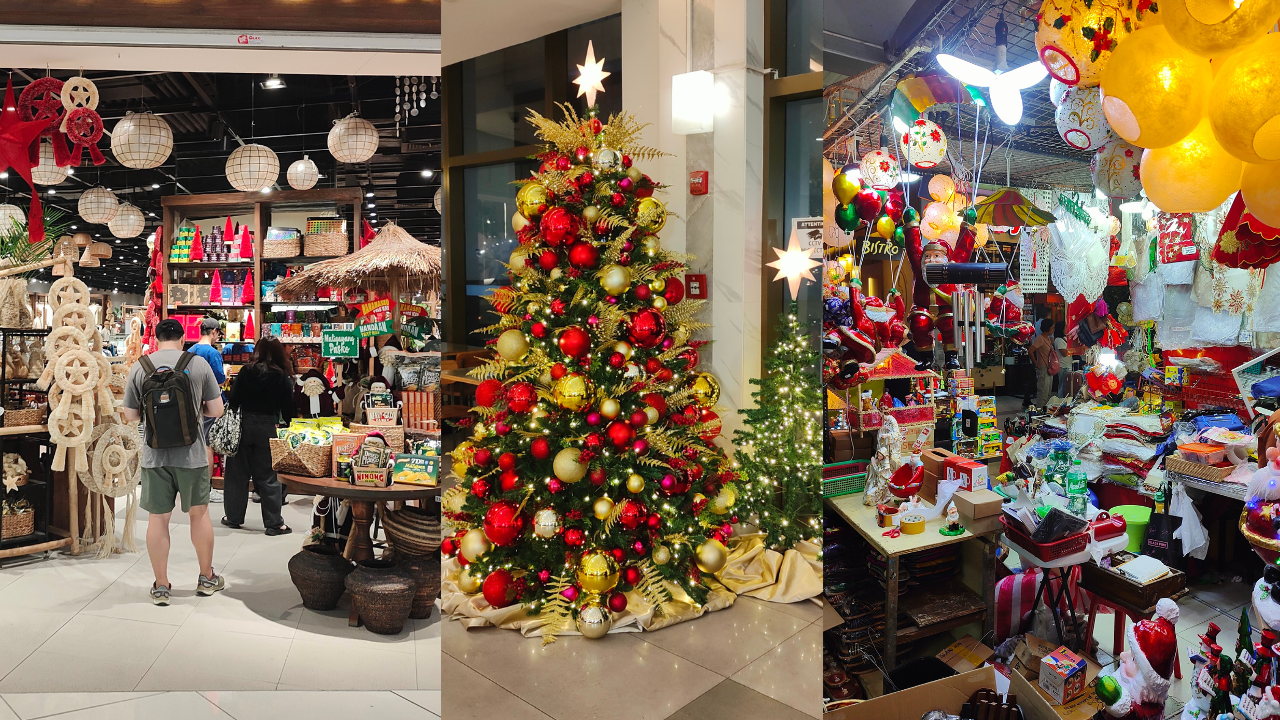
To many, Manila is the commercial and administrative heart of the Philippines — its skyscrapers host banks, BPOs, trade centres, corporate offices and an endless number of malls. But within the city lies Intramuros, the old walled city, a quiet enclave where Manila’s Spanish colonial legacy endures.
Few cities wear their history as casually as the Philippines capital. In Manila, every corner tells a story — from stone churches that have survived wars to streets filled with umbrellas and songs. And yet, Manila perfectly balances the fast-paced high-rises and glittering malls with church bells echoing against stone.
In one moment, you’re gazing at tall modern structures reaching the skyline. In the next, you’re standing before San Agustin Church that whispers stories from the 16th Century. It’s a city that holds its past close, even as it races towards the future.

A Christmas that begins in September
One of the most striking things for me was how uniquely and joyfully the Philippines celebrates Christmas. Because faith is so woven into daily life, religious festivals and practices breathe through Filipino culture.
Christmas, in particular, is spectacular. It begins early — as early as September.
Malls and homes were already (I went in early October) adorned with decorations – trees, lights and parols (star lanterns) as Christmas carols played in the background.
After All Saints’ Day on November 1, the festive spirit sweeps across the Philippines — homes glow with lights, carols fill the air, and communities burst into friendly competitions over decorations and dancing. The ‘ber’ months bring joy to Filipinos of all ages.
Did you know that the Philippines is the only country in Asia where Christianity is the majority faith? An estimated 85% to 90% of the population identifies as Christians, predominantly Roman Catholic.
In a country often battered by typhoons, floods, earthquakes and uncertainty, Christmas brings hope and shines as a season of light, family and resilience.
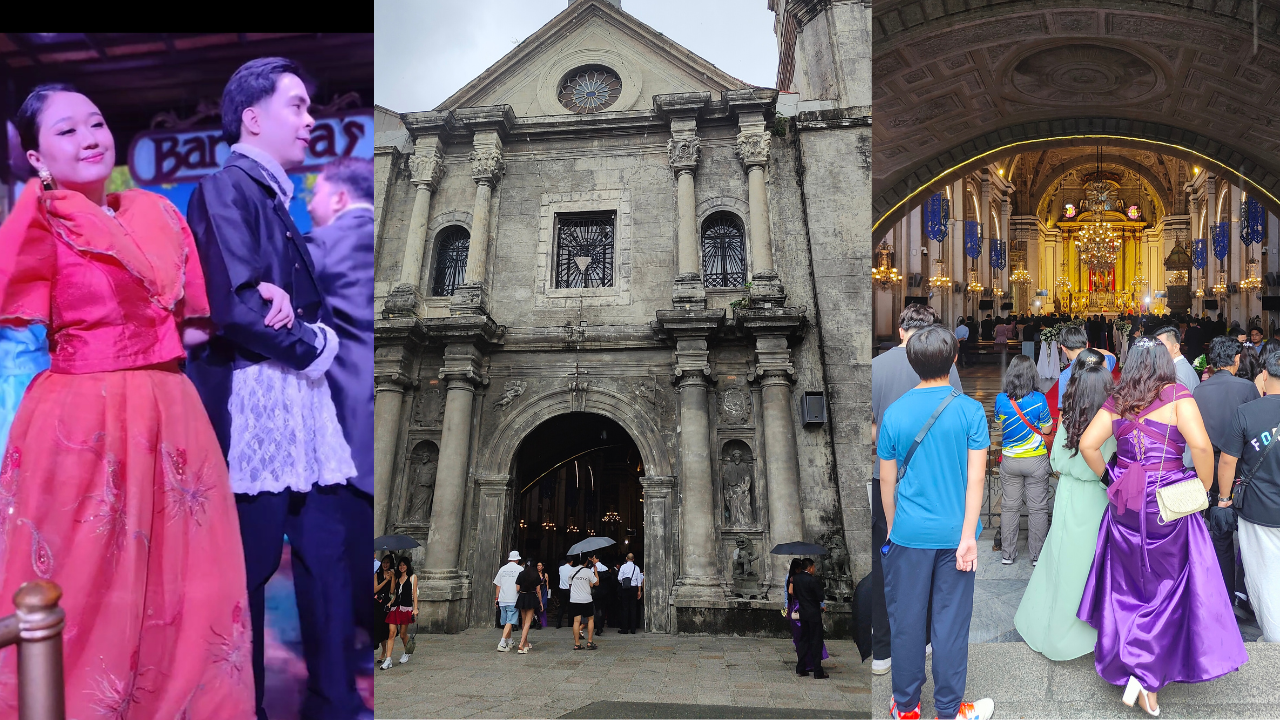
A Manila reverie: Rain, weddings and warm smiles
In my three days of stay, Manila revealed itself as a city of contrasts: a bustling business hub, glass towers rising skyward, and yet just steps away, the hushed corridors of centuries-old stone church.
One of the most exquisite treasures in Intramuros is San Agustin Church, a Unesco heritage site. Built in stone between 1587 and 1607, it stands as the oldest stone church in the Philippines. Its architecture — thick stone walls, ornate altars, rich wooden carvings — survived fires, earthquakes, wars, even bombings.
During the Battle of Manila in 1945, Intramuros was nearly razed to the ground, with centuries-old structures reduced to rubble under relentless shelling and bombardment. San Agustin Church, however, stood as one of the few buildings to survive the devastation. Its thick adobe walls helped it withstand the intense fighting that engulfed the walled city.
Beyond its survival, San Agustin played a grim role during World War II. When Japanese forces occupied Manila, the church and its adjoining monastery were turned into a concentration camp. Hundreds of civilians — mostly priests, nuns, local residents, and foreign nationals — were imprisoned within its walls. During the final days of the battle, Japanese troops held hostages inside the church, and many civilians sought refuge there, hoping its sacred status would spare them from the violence outside.
Stepping through those massive wooden doors, you feel the weight of centuries: Muted light, carved choir stalls of molave wood with ivory inlays, trompe-l’œil (illusion of 3rd) ceiling paintings that seem to float, a grand pipe organ, and dozens of chandeliers — European in origin yet turned local in spirit.
On my visit, rain fell gently outside as a wedding ceremony took place inside: petals, white gown, candlelight, soft organ music — a moment suspended between past and present. The bride walked down the rain-kissed aisle with her gown brushing the stone floor, followed by her bridesmaids in lavender.

A splash of nature: Pagsanjan Falls
If Manila is stone, commerce, devotion, then Pagsanjan Falls is water, green hills, thrill, and serenity all at once.
One afternoon we escaped the city’s roar and journeyed to Pagsanjan Falls in Laguna province.
Officially, Pagsanjan Falls (also known locally as Magdapio Falls) has three tiers of drops. The main plunge is dramatic, and parts are hidden unless approached by raft or from certain angles.
The way to the falls is lined with lush vegetation, jungle moss, rocks. When we reached, the plunge and mist enveloped us — the roar, the freshness, the sudden quiet of forested cliffs. The return downstream ride is more thrilling: maneuvering through 14 rapids.
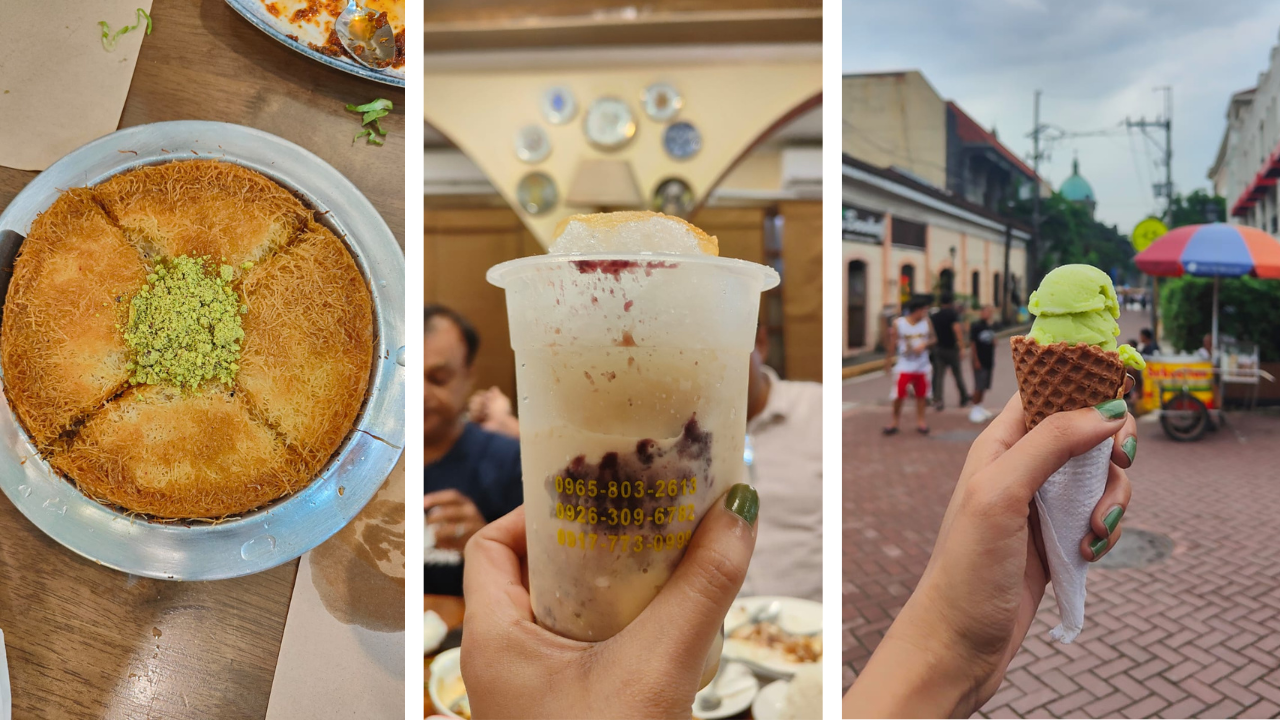
Filipino flavours tell a story
One cannot write about the Philippines without letting its flavours rise. No visit is complete without tasting what makes Filipino food so alive.
Halo-halo (mix-mix)
This layered dessert is a symphony of crushed ice, sweetened beans, ube (purple yam), kaong (sugar palm fruit), leche flan, jelly bits, fresh or preserved fruit, topped (often) with a scoop of ube ice cream or leche flan. It is a celebration in a glass.
The word halo-halo literally means ‘mix-mix.’ You stir it all and each spoonful delivers new texture, sweetness, surprise.
Dirty Ice Cream
Locally made street ice cream (called sorbetes) is popularly sold from colorful wooden carts pushed by sorbeteros. The ice-cream got its name not because it’s unclean, but because it’s sold on the streets in warm weather.
‘Dirty Ice Cream’ comes often in tropical flavors – queso (cheese), ube, mango, coconut, chocolate and avacado. In 2023, both halo-halo and sorbetes were named among the world’s top frozen desserts by TasteAtlas.
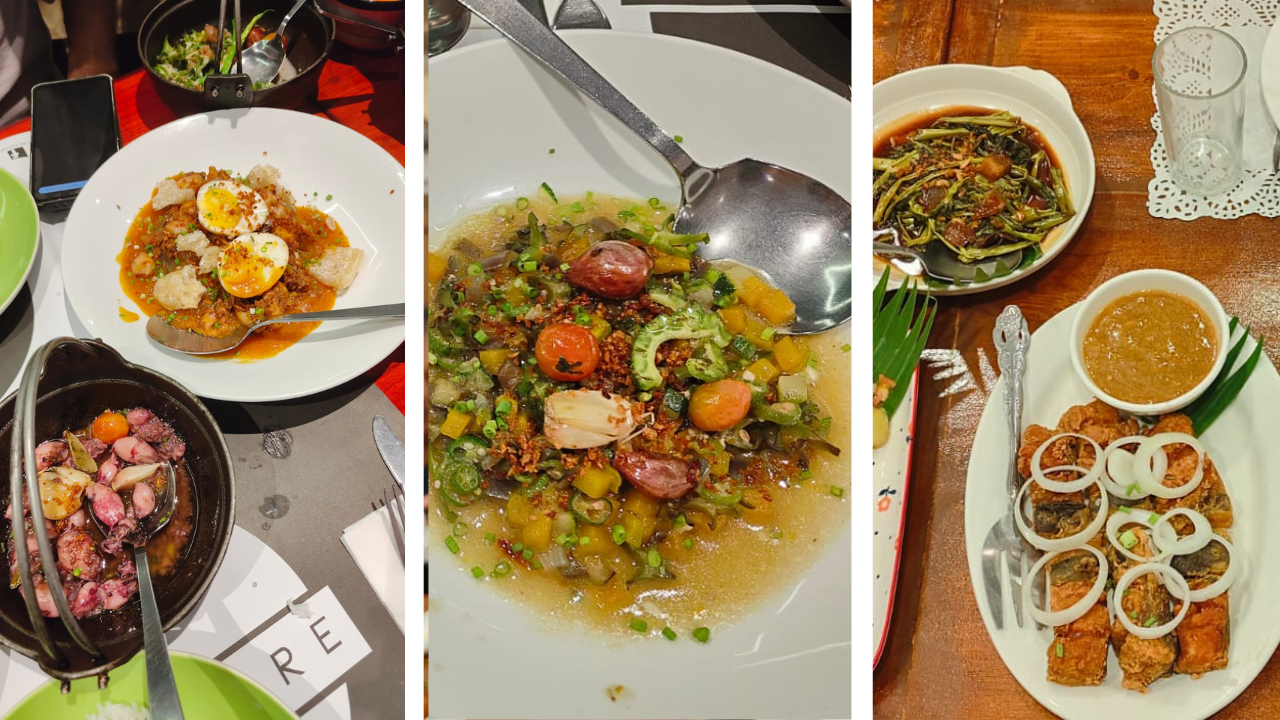
Food is a Filipino’s love language
Beyond sweets, Filipino cuisine is a delightful blend of indigenous, Spanish, Chinese and American influences: adobo (meat stewed with vinegar, soy and garlic), sinigang (tamarind-based sour soup), lechon (roast pig), pancit (noodles), kinilaw (ceviche-style raw seafood) and more.
Street food, small “karinderia” (eatery) stalls, and large dining rooms coexist, and Filipinos love to share — food is social, food is love.
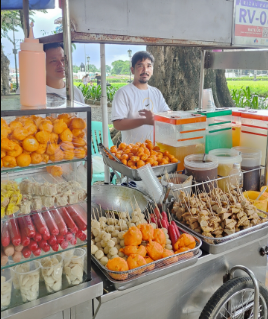
What is there for Indians?
Flying into Manila now feels like stepping across a doorstep newly flagged: Air India offers the only direct flight from Delhi to Manila. For Indians looking to experience this archipelago of islands, that non-stop route is more than convenience — it’s invitation. And yes, visa on arrival makes the invitation even sweeter.
![]()
Flight: Air India’s direct Delhi–Manila service (approx. 6 hours)
Visa: Visa on arrival for Indian passport holders
Currency: Philippine Peso (₱)
Language: Filipino & English widely spoken
When to go: November–April (dry season)
Things to do
Beaches and natural beauty: Islands, tropics, white sand, reefs, cliffs
Shopping & nightlife: Modern malls, branded goods, street markets, bars, parties. Manila is alive, 24/7 in many stretches
Business & career: English is widely spoken; BPO, tech, tourism, trade all growing. Shared colonial legacies help in communication, legal systems etc
Cuisine & culture: The mixture of Spanish, American, local (Tagalog, Cebuano, Ilocano etc) makes for a rich tapestry: language, festivals, food
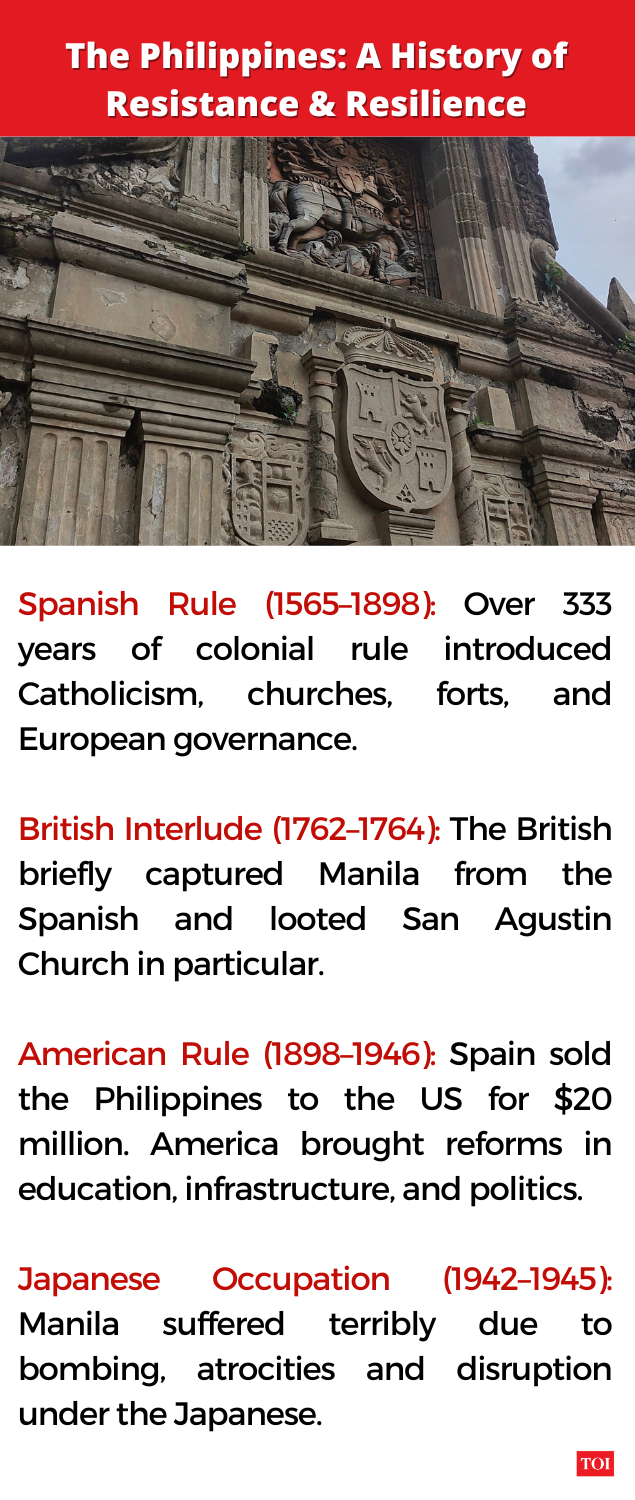
The Filipino spirit
Perhaps what stays with you most is the human spirit. Filipinos are known for their warmth, hospitality and joyful resilience. Despite typhoons, floods or economic uncertainty, laughter and song persist.
Walking the streets, you’ll hear spontaneous karaoke, see street vendors calling out their offerings, families lingering in plazas, children playing. The blend of Christian faith, communal bonds and colonial history gives rise to a people deeply anchored yet open, rooted yet evolving.
The author was on a tour to Manila at the invitation of the Philippines tourism board and Air India.
Disclaimer
Views expressed above are the author’s own.
END OF ARTICLE






